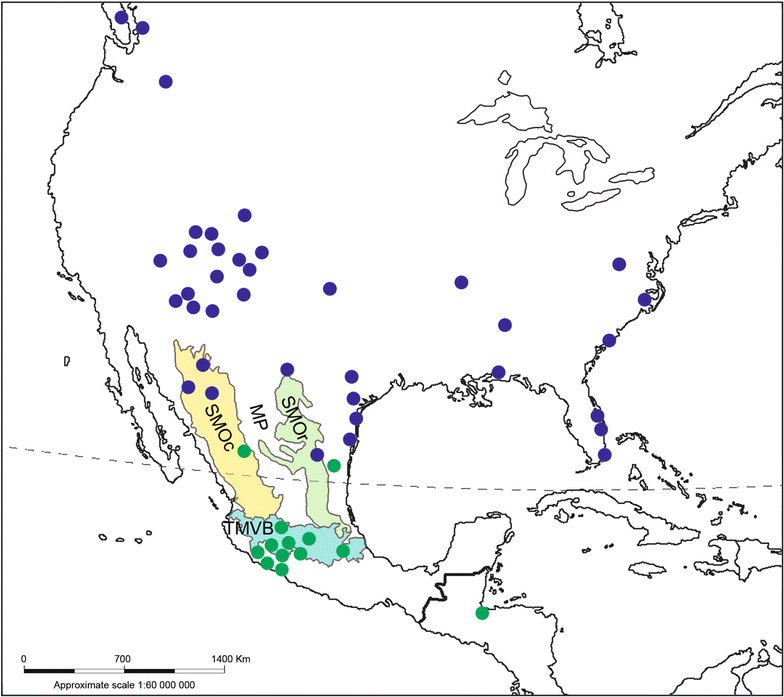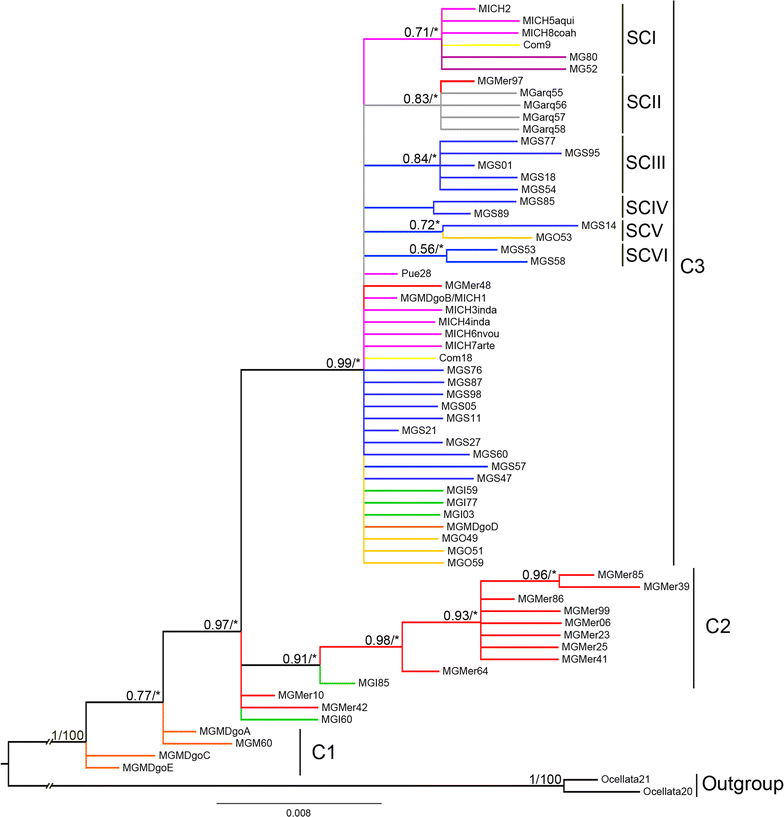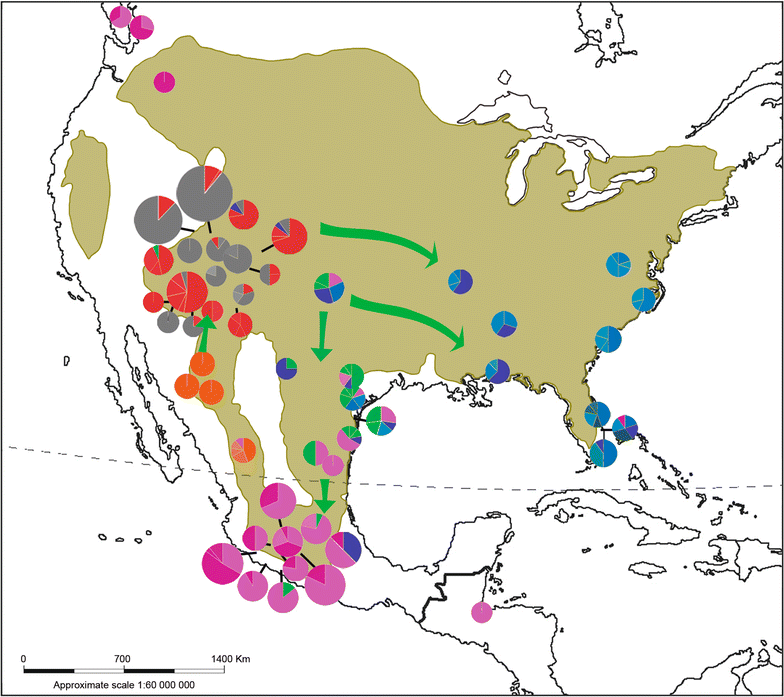Evolutionary history of Mexican domesticated and wild Meleagris gallopavo
- PMID: 29665772
- PMCID: PMC5905111
- DOI: 10.1186/s12711-018-0388-8
Evolutionary history of Mexican domesticated and wild Meleagris gallopavo
Abstract
Background: The distribution of the wild turkey (Meleagris gallopavo) extends from Mexico to southeastern Canada and to the eastern and southern regions of the USA. Six subspecies have been described based on morphological characteristics and/or geographical variations in wild and domesticated populations. In this paper, based on DNA sequence data from the mitochondrial D-loop, we investigated the genetic diversity and structure, genealogical relationships, divergence time and demographic history of M. gallopavo populations including domesticated individuals.
Results: Analyses of 612 wild and domesticated turkey mitochondrial D-loop sequences, including 187 that were collected for this study and 425 from databases, revealed 64 haplotypes with few mutations, some of which are shared between domesticated and wild turkeys. We found a high level of haplotype and nucleotide diversity, which suggests that the total population of this species is large and stable with an old evolutionary history. The results of genetic differentiation, haplotype network, and genealogical relationships analyses revealed three main genetic groups within the species: mexicana as a population relict (C1), merriami (C2), and mexicana/intermedia/silvestris/osceola (C3). Haplotypes detected in domesticated turkeys belong to group C3. Estimates of divergence times agree with range expansion and diversification events of the relict population of M. gallopavo in northwestern Mexico during the Pliocene-Pleistocene and Pleistocene-Holocene boundaries. Demographic reconstruction showed that an expansion of the population occurred 110,000 to 130,000 years ago (Kya), followed by a stable period 100 Kya and finally a decline ~ 10 Kya (Pleistocene-Holocene boundary). In Mexico, the Trans-Mexican Volcanic Belt may be responsible for the range expansion of the C3 group. Two haplotypes with different divergence times, MGMDgoB/MICH1 and MICH2, are dominant in domesticated and commercial turkeys.
Conclusions: During the Pleistocene, a large and stable population of M. gallopavo covered a wide geographic distribution from the north to the center of America (USA and Mexico). The mexicana, merriami, and mexicana/intermedia/silvestris/osceola genetic groups originated after divergence and range expansion from northwestern Mexico during the Pliocene-Pleistocene and Pleistocene-Holocene boundaries. Old and new maternal lines of the mexicana/intermedia/silvestris/osceola genetic group were distributed within the Trans-Mexican Volcanic Belt where individuals were captured for domestication. Two haplotypes are the main founder maternal lines of domesticated turkeys.
Figures





References
-
- Howell SN, Webb S. A guide to the birds of Mexico and northern Central America. Oxford: Oxford University Press; 1995. pp. 225–226.
-
- Porter R, Kirwan G. Wild turkey (Meleagris gallopavo). In: del Hoyo J, Elliott A, Sargatal J, Christie DA, de Juana E, editors. Handbook of the birds of the world alive. Barcelona: Lynx Edicions; 2017. http://www.hbw.com/node/53318. Accessed 25 Oct 2017.
-
- Schorger AW. The wild turkey: its history and domestication. Oklahoma: University of Oklahoma Press; 1966.
-
- Stangel PW, Leberg PL, Smith JI. Systematics and population genetics. In: Dickson JG, editor. The wild turkey: biology and management. Pennsylvannia: Stackpole Books; 1992. pp. 18–28.
Publication types
MeSH terms
Substances
Grants and funding
- Scholarship No. 359650/Consejo Nacional de Ciencia y Tecnología/International
- Scholarship/Consejo Nacional de Ciencia y Tecnología/International
- 2004-C01-201/Consejo Nacional de Ciencia y Tecnología-SAGARPA (MX)/International
- 2009-05-115938/Fondos Mixtos Consejo Nacional de Ciencia y Tecnología Gobierno del Estado de Michoacán (MX)/International
LinkOut - more resources
Full Text Sources
Other Literature Sources
Medical
Miscellaneous

